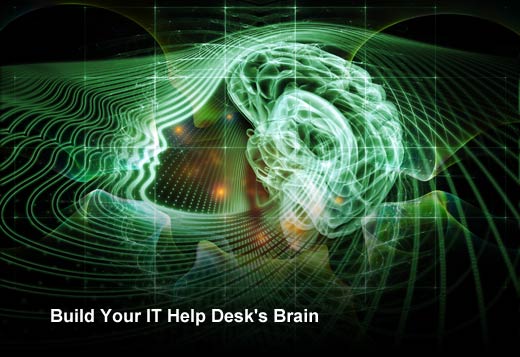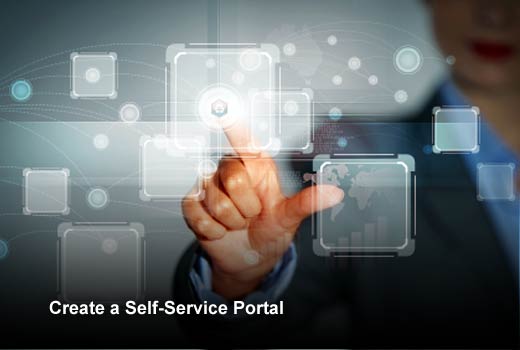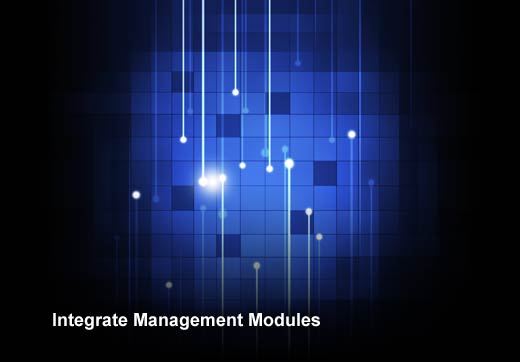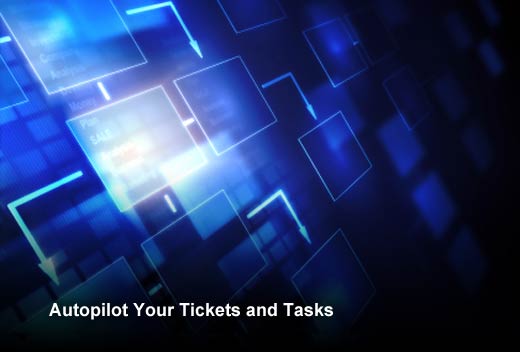Whether or not you subscribe to the butterfly effect, the idea holds true for IT operations. Even the tiniest of initial changes can determine the path of your IT ticket. So, tread carefully. Without automation and smart management, your help desk could quickly and easily spin out of control. In this slideshow, LeAnn Smiles, market analyst at ManageEngine, has identified 10 easy steps that will make IT ticket management a breeze for your organization.
Better Help Desk Management
Click through for 10 easy steps organizations can take to improve IT ticket management, as identified by LeAnn Smiles, marketing analyst at ManageEngine.
Stay Connected with End Users
The key ingredient in building a credible relationship with your end user is communication. Regular updates on the progress of requests, important announcements on outages, and any useful ticket resolutions should be shared with the end users. IT help desk software allows you to configure end-user notifications for events such as receipt and updates on incidents, ticket assignment, and ticket resolution and closure. Replies on frequently and commonly ticketed issues and general responses requesting more information can be configured as email templates to improve first response rates. An ITSM system that allows conversations within the ticket will minimize email clutter and maintain a single record system. Live chat software applications offer end users the opportunity to communicate one on one with the IT technician, ensuring quicker turnarounds.
Stick to SLAs
To establish clear agreements on expected IT services and standards, the IT help desk team and the end user must be on the same page. You can set up service-level agreements (SLAs) that are practical and achievable to improve service efficiency and decrease system downtime. Set up stringent response SLAs at your IT help desk to maintain initial expectations, following which resolution SLAs should be created based on the ticket priority. For instance, a replacement request in the hardware department can have a lower resolution SLA than an issue on a server crashing unexpectedly. In turn, priority depends on the level of impact on business. It is also important to have timely escalations. Use your IT help desk software to automate such escalations proactively when the SLA is nearing violation or reactively when the SLA has already been violated.
Build Your IT Help Desk’s Brain
A repository of resolutions and workarounds, in the form of an IT knowledge base, benefits IT end users and technicians alike. It works proactively to help manage incident volume, mean-time to respond to and resolve incidents, and first-line incident closure rates. Build a comprehensive knowledge base that technicians and end users can draw information from. Technicians should also be able to add solutions to the knowledge base with approval workflows. Make the knowledge base easily accessible with relevant tags and keywords. Your help desk application should also be programmed to allow technicians to convert a derived solution directly into a knowledge item, thereby recording it in the knowledge base for future reference.
Create a Self-Service Portal
Many customers rely primarily on self-sufficiency for their IT issues and seek assistance from the help desk only when it’s absolutely inevitable. Similarly, a well-built self-service portal can significantly cut expenses and time for IT technicians. As much as having a good knowledge base is an advantage, it can only thrive if accessible to the end-user community through a self-service portal. For a more convenient and fulfilling user experience, use an IT help desk application with a self-service portal that enables IT end users to create tickets using templates or add new ones with ease, look for possible solutions in the knowledge base, add custom apps, and track their schedules with reminders. You can also allow end users to forward existing solutions in the knowledge base to other users, thereby allowing collaborative problem-solving. End users should also have a bird’s eye view of the IT operations in the application that pertain to their requests. For instance, details such as the status of a ticket, respective technician and any announcements should be made available in the self-service portal.
Use Surveys for Helpful Insight
The best way to see where your product stands with your customers is to hear it from them. User feedback, in the form of surveys, should be leveraged to obtain specific positive insight and identify any pain points in IT services. IT surveys, birthed from within IT help desk applications, distinctly target the active end-user community, from which you can derive clear statistics as reports. In your IT help desk application, create custom questionnaires and, with specific rules, schedule their automatic release pending multiple or single ticket closure. You can pose questions such as how satisfied the end user is with the IT help desk’s performance, how relevant the features of the IT help desk application are to their organization, and even whether they would recommend the IT service to someone else. Converting survey results to reports will allow you to analyze the statistics more effectively. Formulate action plans to address the issues and opportunities identified by the IT survey and implement the changes and prospects to improve ITSM.
Integrate Management Modules
Your IT help desk can be a lifeline for your technicians who often struggle to cope with their multi-tasking schedules. A system that ties all individual entities of ITSM to a common base makes workflows easy and less time-consuming. Whether a ticket only reveals the tip of the iceberg or calls for a change in infrastructure, your IT help desk should associate ticket management with problem and change management. When the domino effect takes over incidents, convert them to problems or changes as relevant and associate them across modules in your IT help desk application to establish coordinating workflows. You can solve multiple issues at once by linking duplicate or repetitive tickets and associating them to a problem. That way, the tickets are automatically closed when the underlying problem is resolved.
Never ‘Stick a Fork in It’ Before It’s Fully Done
Complete resolutions improve the knowledge base of your organization and are great resources for future reference. Ensuring that tickets are not closed prematurely, before problems are resolved entirely and effectively, will not only help avoid glitches but will also satisfy end users with complete results. A good way to achieve this is by setting up your IT help desk application to automatically notify end users of ticket closure and request their approval. The catch, though, is that waiting for approvals can delay closure, thereby affecting important metrics. Avoid such circumstances by automating your application to close tickets after a specific time should there be no response.
Autopilot Your Tickets and Tasks
An IT help desk without automated workflows severely impairs your system. To rise to the challenge posed by increasing demands in ITSM, it is essential that every organization embraces the advancements in modern ITSM tools and models. Automated workflows, unmatched in terms of productivity, availability, efficiency and performance, are essential. Automation — from tasks such as categorizing an incoming request and assigning it to the right technician in the round robin or load balancing method to setting the priority and level of an incoming ticket to closing a ticket — can make a whole lot of difference. Configure automatic notifications from the application for specific events to save time. Server housekeeping activities can also be effectively managed by setting up scheduled tasks in the IT help desk application. This will prevent lapse of service and make your IT help desk more efficient than ever.
Pin the Right People to the Right Job
Whether automatic or manual, inflowing tickets should be directed to well-trained and specific technicians depending on their relevant field of expertise. Assigning the right IT technician will minimize work time and exclude chaos in your IT help desk workflow.
Specific roles associated with registered technicians will be crucial parameters while sorting tickets in the automated ticket assignment process. You can specify each technician’s area of expertise and associate it with relevant sites or departments in your organization. Providing IT technicians with access and task permissions allows them to work on assigned tickets with ease.
KISS (Keep It Simple, Silly)
Simplicity dissolves chaos. Offer end users the opportunity to use an IT help desk application that is simple and easy to navigate. In your application, create pre-populated custom forms for end users to prevent categorization errors while logging tickets. Accurate incident categorization is the first step to avoid reassignment. You can also create technician templates for general responses and common tasks. The need for a simple service catalog that end users can view in the application is irrefutable. Your IT help desk application should allow end users and technicians to have personalized list views of tickets and provide quick links for notifications and ticket creation.













